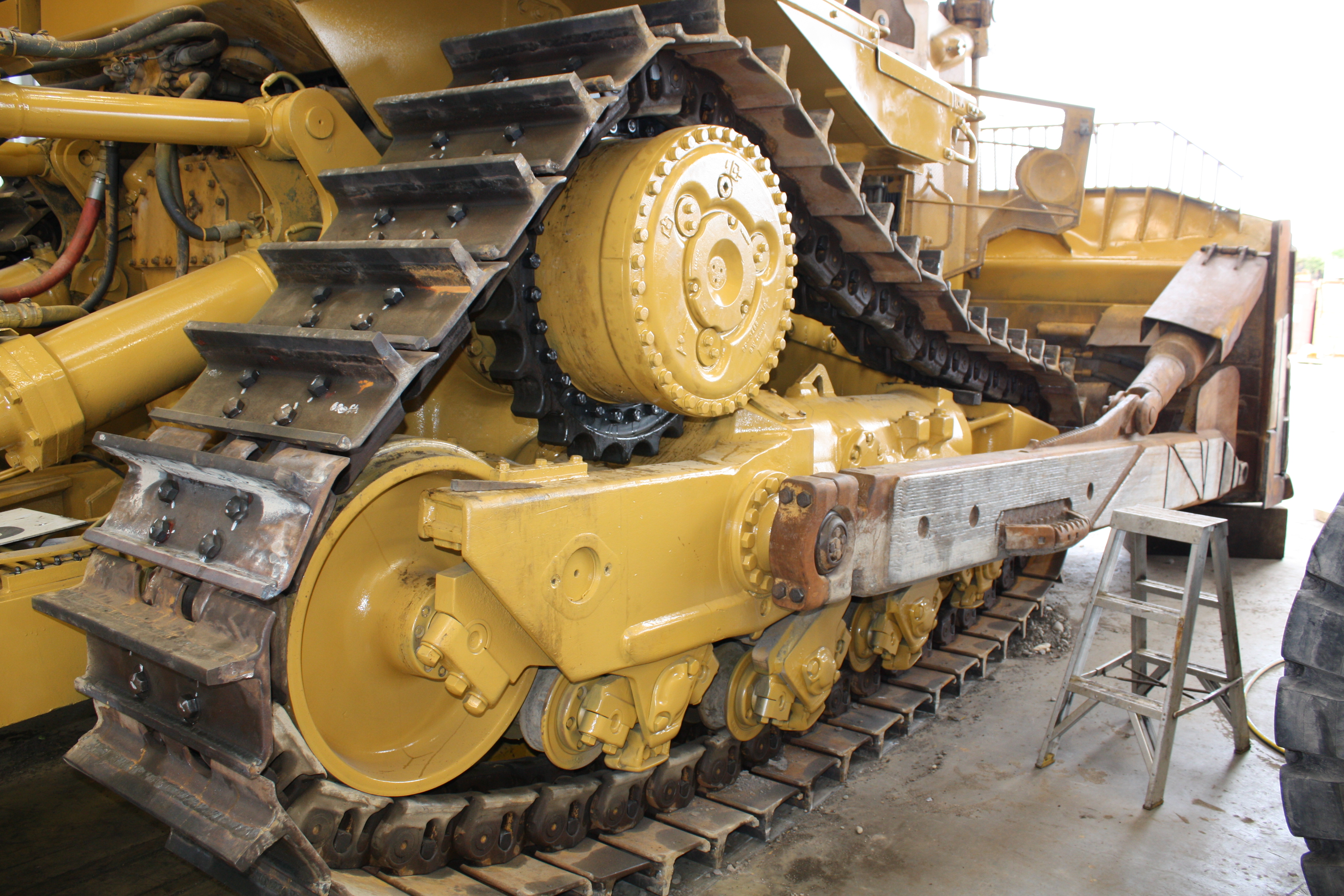- Home
- Blog
Aug 14

HINTS FOR NEW UNDERCARRIAGE INSTALLATION
HELPFUL HINTS FOR NEW UNDERCARRIAGE INSTALLATION

FITTING DOZER CHAINS THE CORRECT WAY
The open end of the chain (not the master link) goes under the rollers and over the sprocket first.
FITTING CHAINS TO DOZERS THE CORRECT WAY
With Dozer type single bar shoes, the lug bar goes closest to the front of machine when looking at the top of the chains.
CHAINS BUNCHING UP
This can be caused by wet working conditions or the machine sitting stationary for long periods so moisture gets in causing seizure of the seals. To fix this try pushing out the track pins, regreasing and pushing back in. Driving along a riverbed to create some vibration may also help loosen it.
This can also be caused by putting bent grouser shoes onto new chains in a different order than they came off
especially on wider shoes - 700, 800, 900mm.
CHAINS JUMPING ON THE SPROCKETS
If the chains are slipping or jumping on the sprockets, it can mean the sprockets are very worn. If the chains and sprockets are new, it may be the track adjuster spring is broken causing it to retract and loosening the chain tension.
Some sprockets are offset and will only fit one way; they could be on incorrectly and running into the side rails of the chains and not in the center.
Worn track roller flanges can cause the chain to waver out to the side and become misaligned with the sprocket. Track guards will help to prevent this.
Sprockets could be the wrong pitch for the chains or vice versa.
GROUSER SHOES
Always use the narrowest shoe possible.
The wider the shoes, the less life you will get out of the chains.
Wide shoes are only recommended for soft soil and swamp terrain.
Always grind paint, scale or surface rust off shoes when fitting. Shoe and chain must be metal to metal contact, otherwise the bolts will come loose and grousers may fall off.
Mud holes in shoes are to stop mud and dirt compacting in the chain under the plates. When the chain passes around the sprocket, the sprocket teeth will push the dirt out. Very necessary in coal, muddy, swampy and landfill conditions.
TRACK ROLLERS
Mixing new and old rollers can overload the new ones as they sit lower than the worn ones, therefore taking a lot of extra weight.
If not replacing all new bottom rollers, it is recommended to fit the better half on one side and all new ones on the other side. This keeps even pressure on each roller without overloading them.
When replacing new rollers, do not travel long distances without resting the machine as rollers could overheat and seize. Stop every 4-5 minutes and go the opposite direction a little to help circulate oil. This is standard precaution for the first 100 hours.


